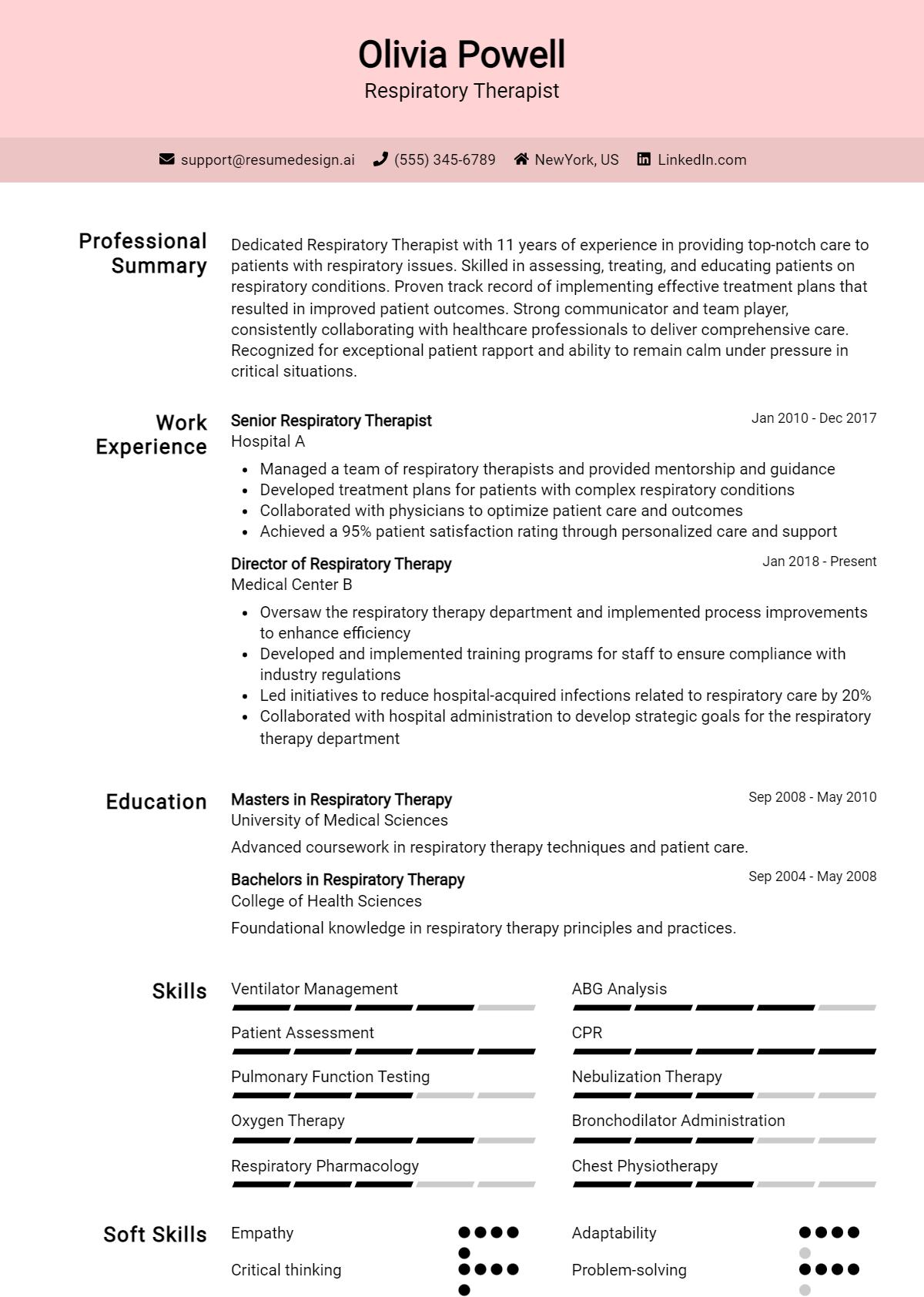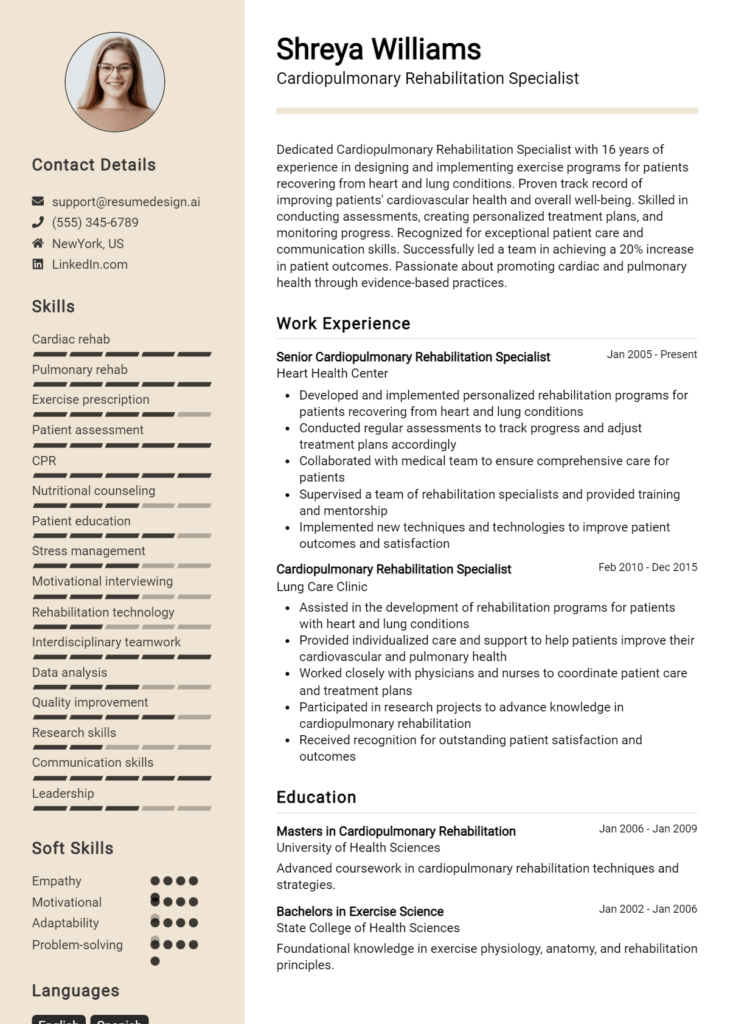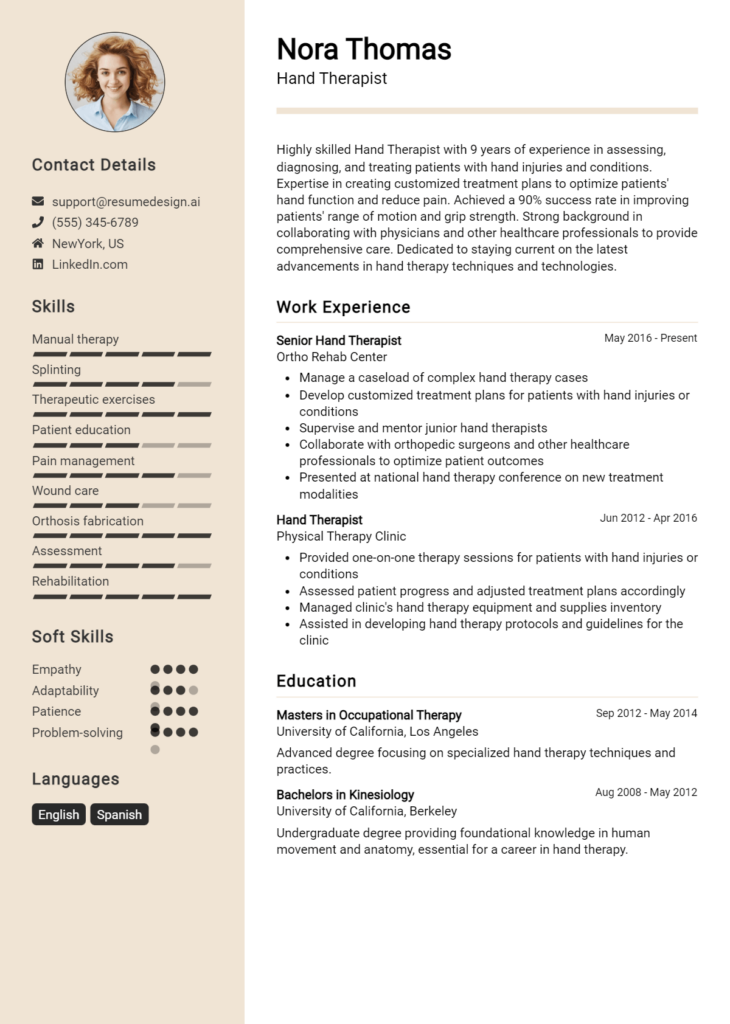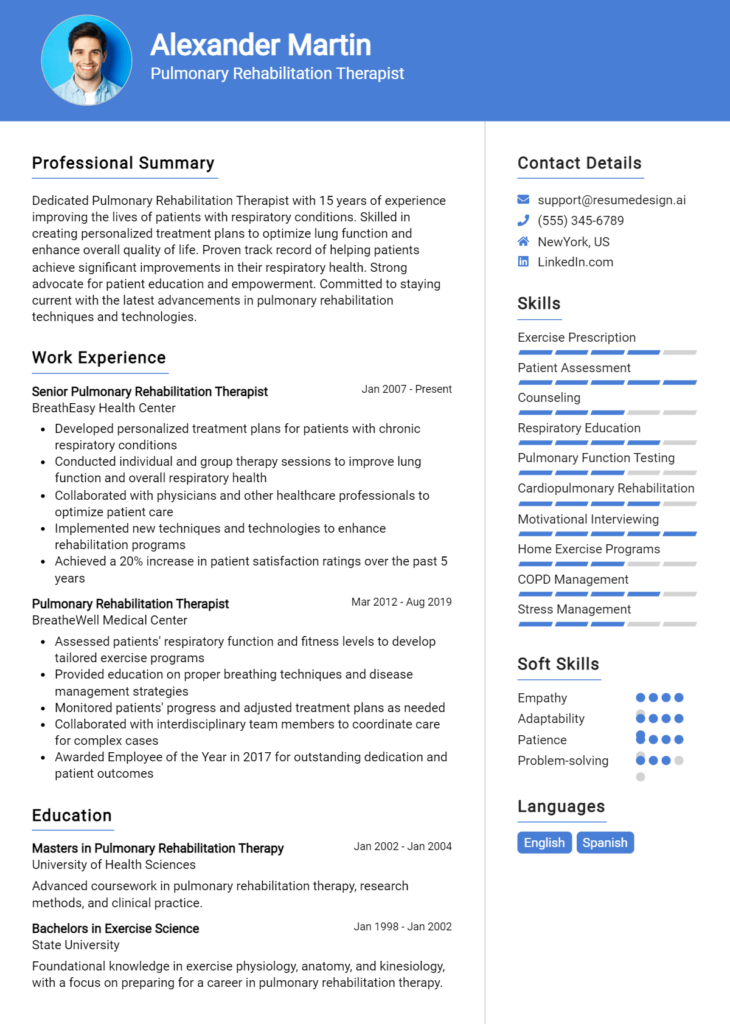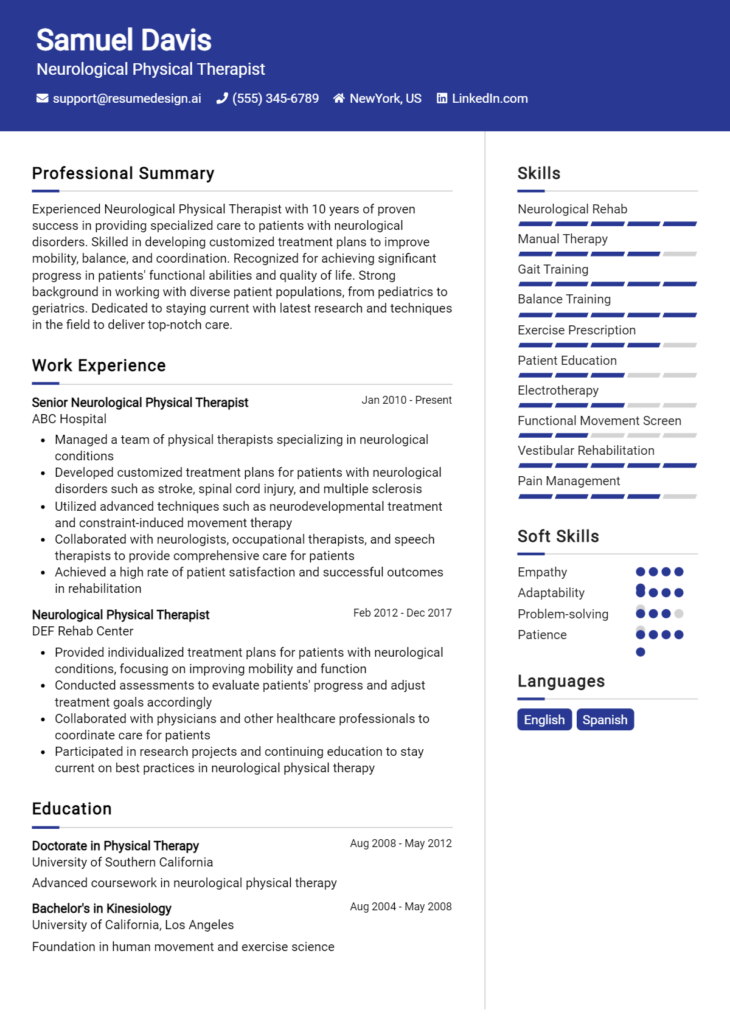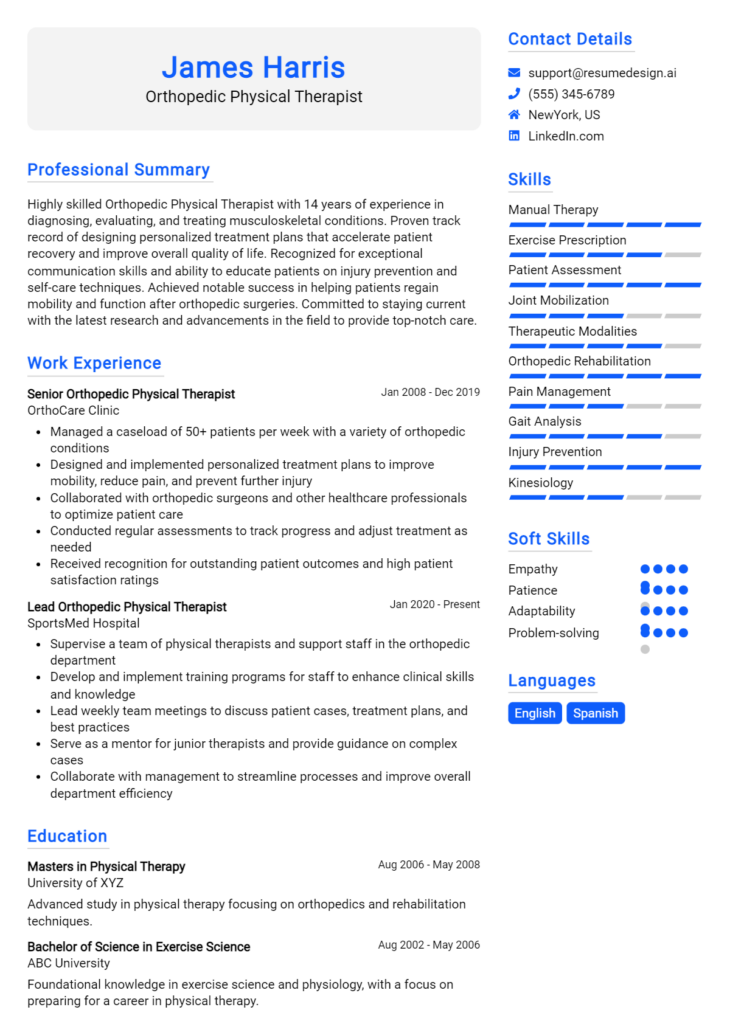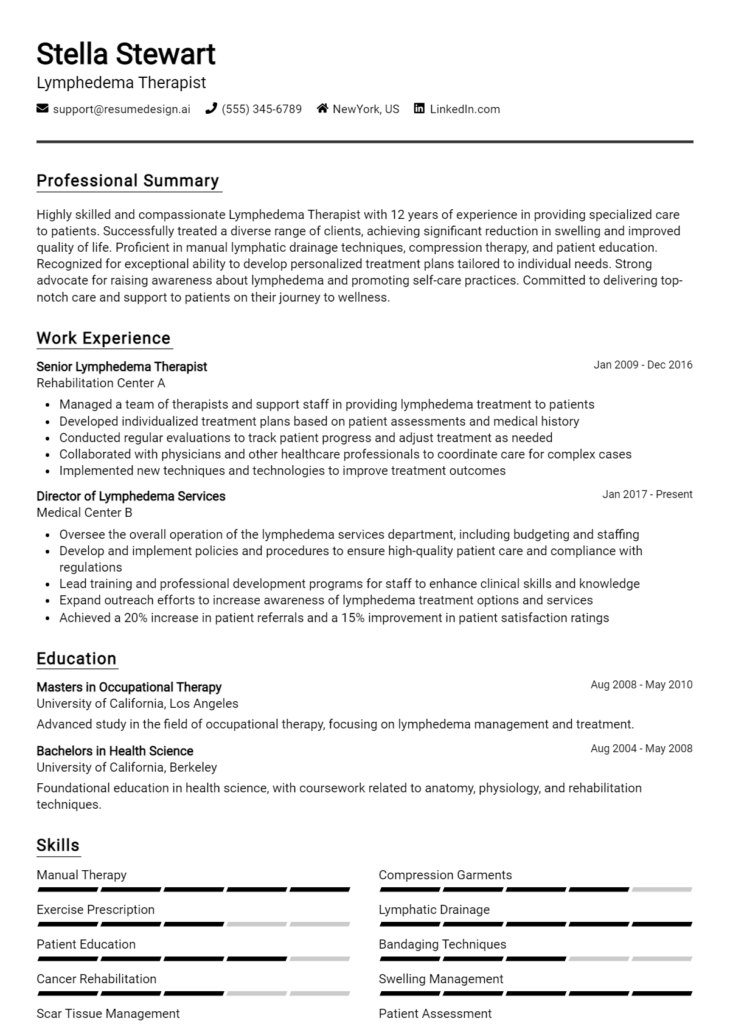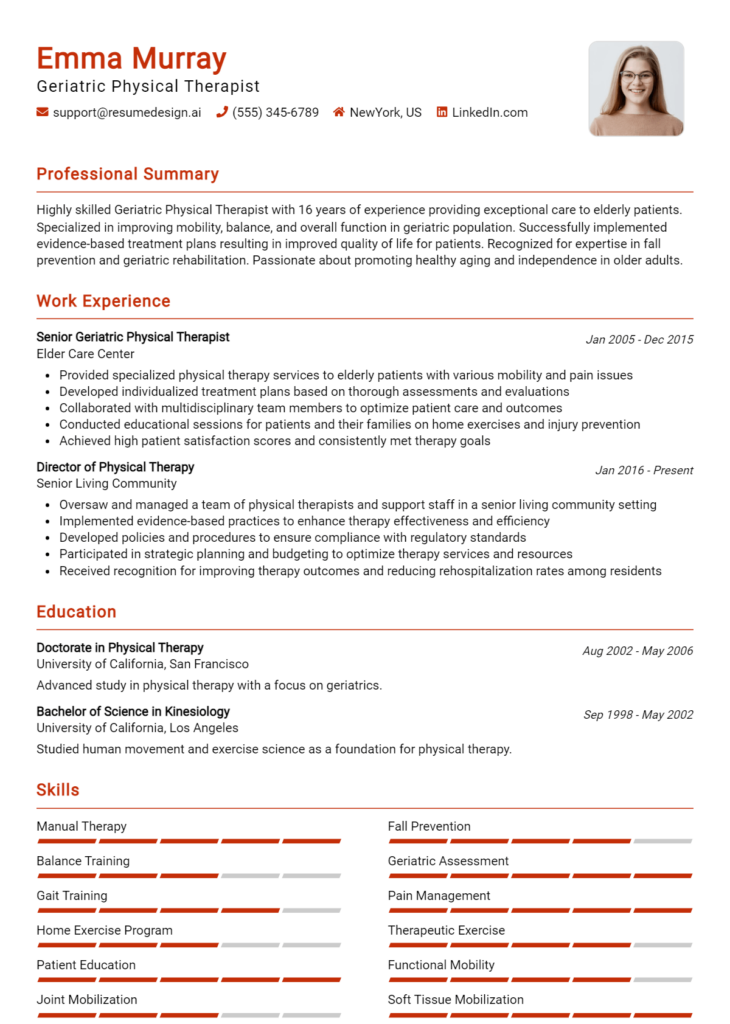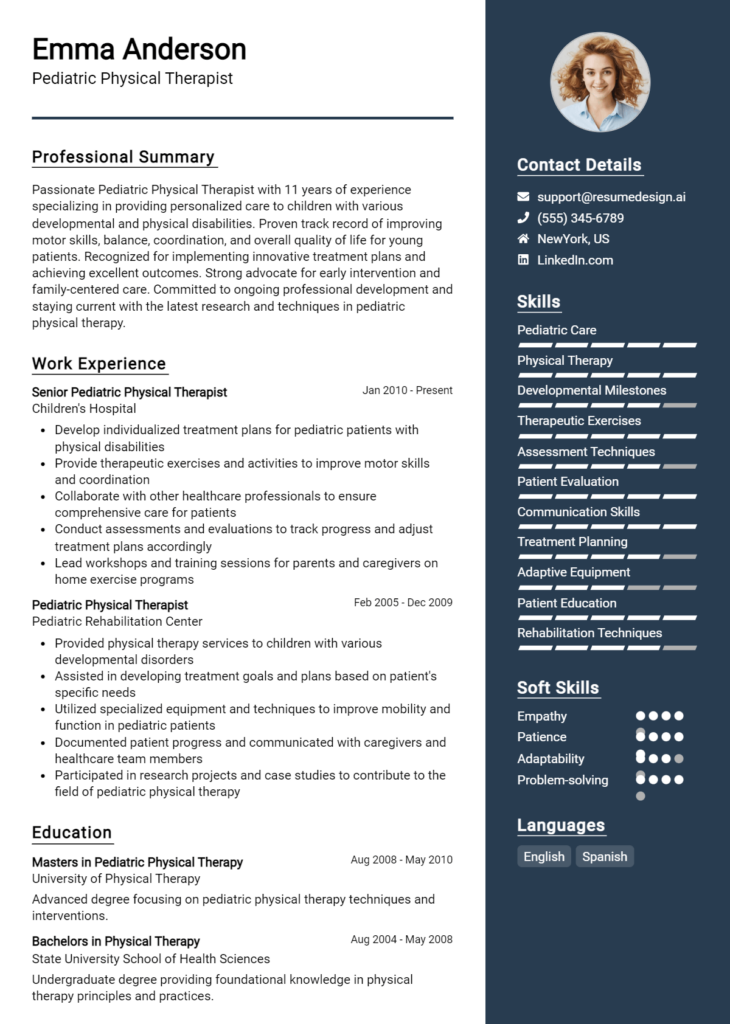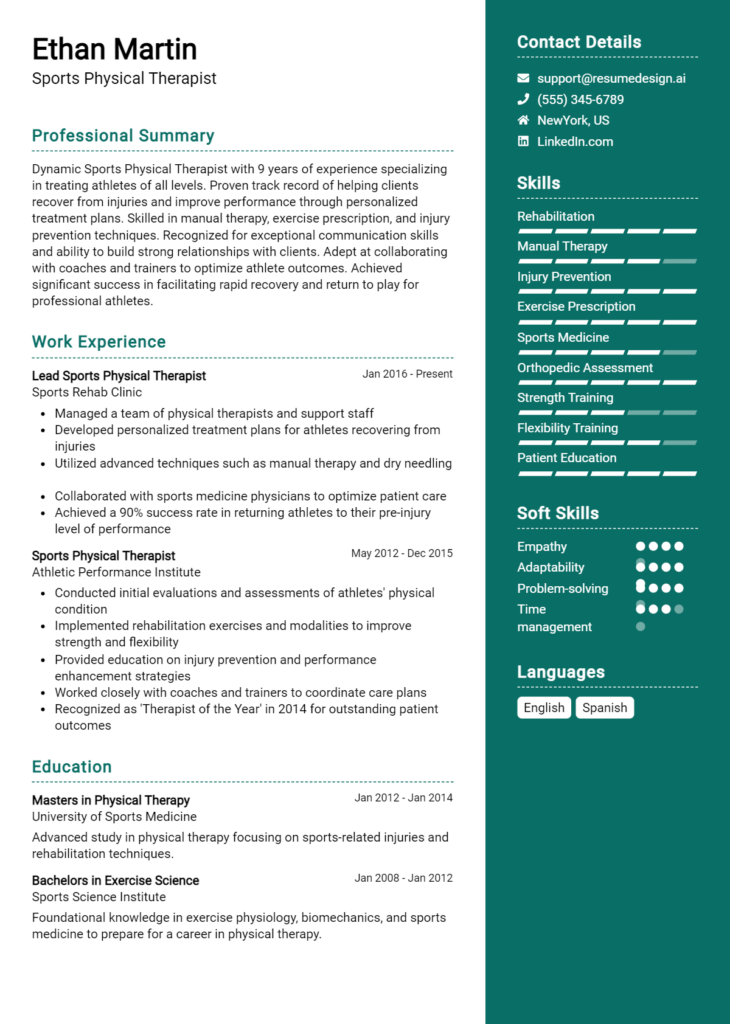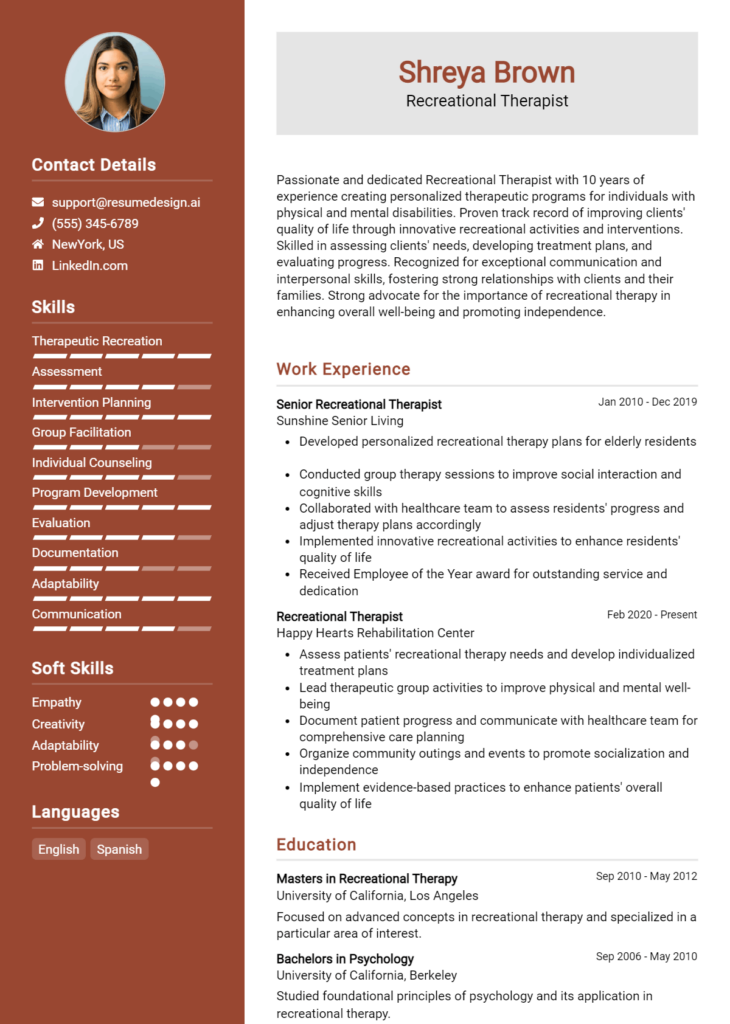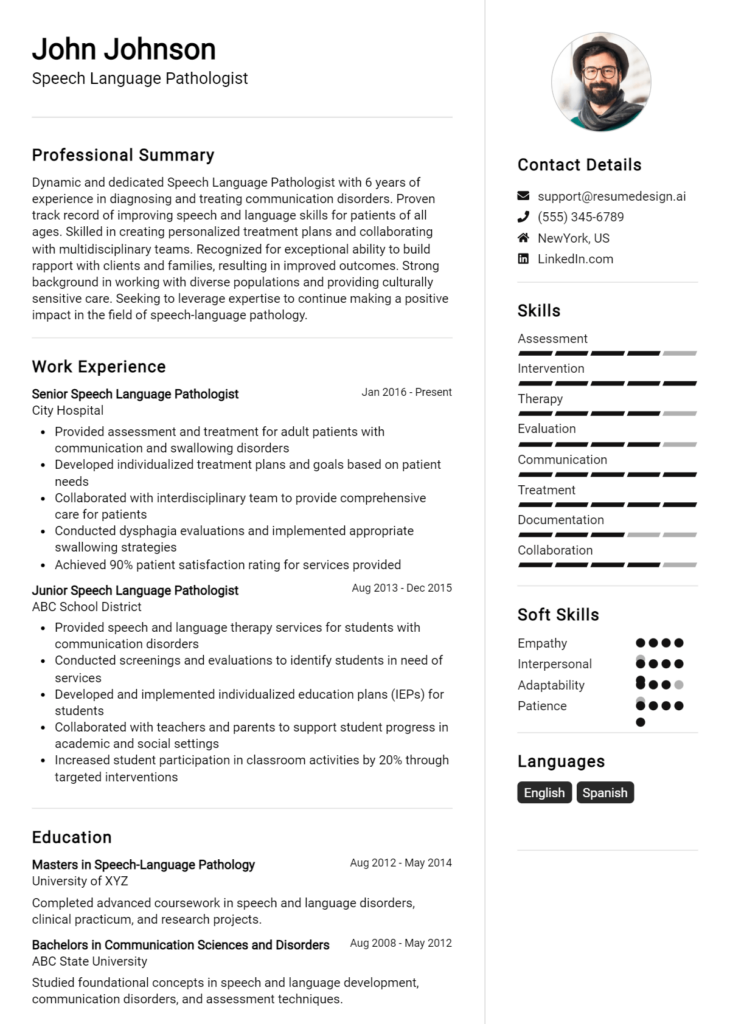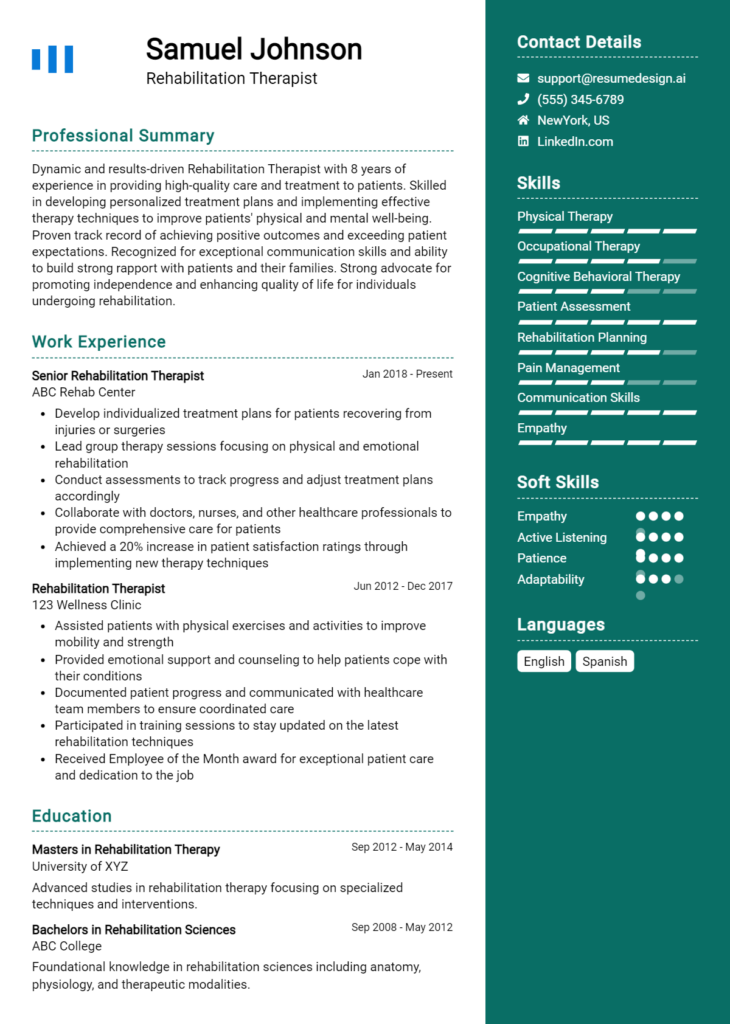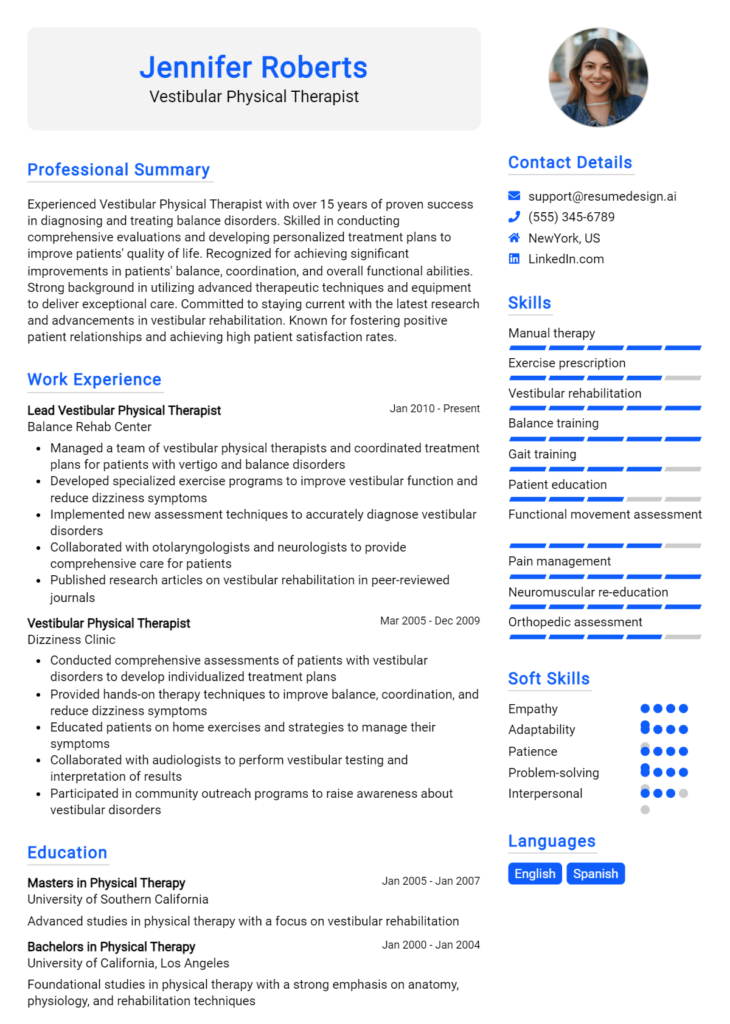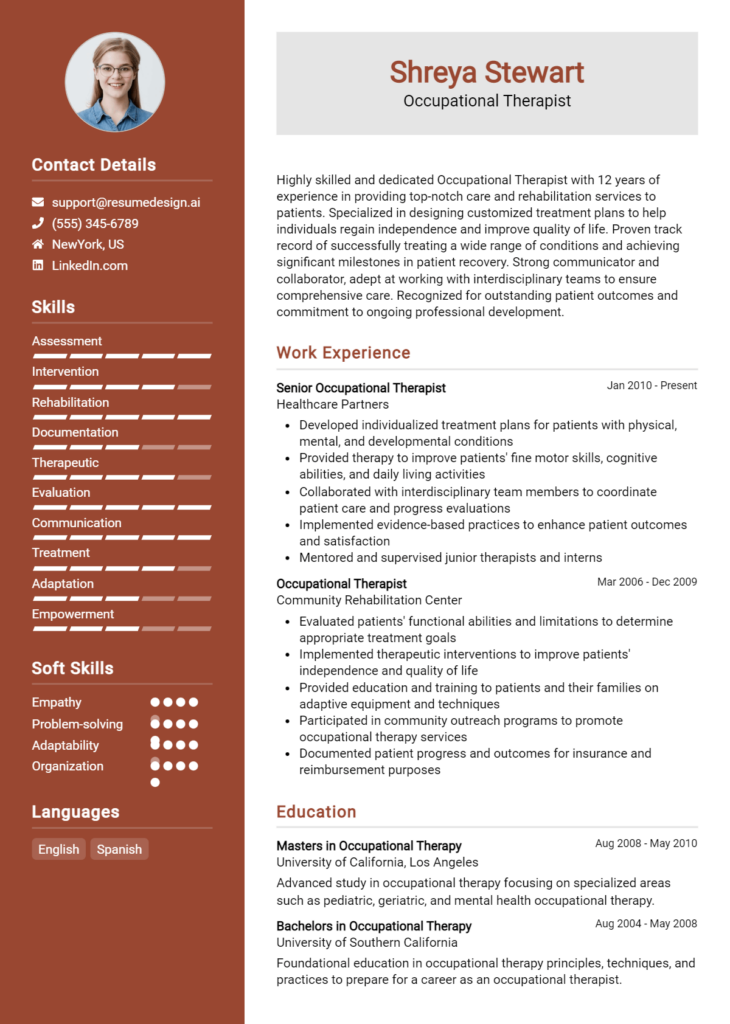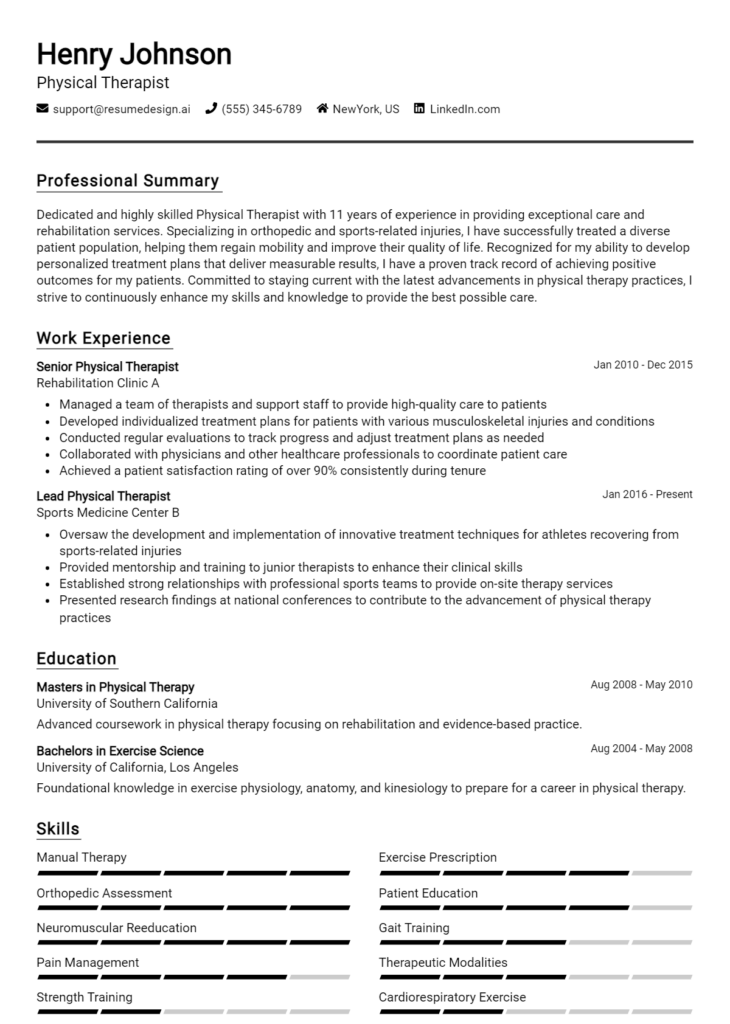Respiratory Therapist Core Responsibilities
Respiratory Therapists play a crucial role in patient care, working closely with physicians, nurses, and other healthcare professionals to diagnose and treat respiratory conditions. Key responsibilities include administering therapies, monitoring patient progress, and educating patients about respiratory health. Essential skills encompass technical proficiency in equipment operation, strong problem-solving abilities, and effective communication. These competencies are vital for achieving organizational goals, and a well-structured resume can effectively highlight these qualifications to prospective employers.
Common Responsibilities Listed on Respiratory Therapist Resume
- Administering respiratory therapies and treatments as prescribed by physicians.
- Conducting diagnostic tests, such as pulmonary function tests.
- Monitoring and recording patient vital signs and responses to treatments.
- Educating patients and families on respiratory health management.
- Collaborating with healthcare teams to create and implement patient care plans.
- Maintaining and troubleshooting respiratory equipment.
- Documenting patient care and treatment outcomes accurately.
- Responding to respiratory emergencies and providing critical care.
- Ensuring compliance with healthcare regulations and standards.
- Participating in ongoing education and training sessions.
- Assisting in pulmonary rehabilitation programs.
- Providing support during patient transfer between departments.
High-Level Resume Tips for Respiratory Therapist Professionals
A well-crafted resume is a vital tool for Respiratory Therapist professionals aiming to make a positive first impression on potential employers. In a competitive job market, your resume serves as your introduction, showcasing not just your skills, but also your achievements and dedication to patient care. It’s essential that your resume reflects your unique qualifications and aligns with the specific requirements of the job you are applying for. In this guide, we will provide practical and actionable resume tips tailored specifically for Respiratory Therapist professionals to help you stand out in your field.
Top Resume Tips for Respiratory Therapist Professionals
- Tailor your resume to the job description by incorporating keywords and phrases from the posting.
- Highlight relevant clinical experience, including internships, volunteer work, and any specialized training.
- Quantify your achievements wherever possible, such as “Improved patient oxygenation levels by 20% through targeted therapy.”
- Showcase industry-specific skills, like ventilator management, patient education, and pulmonary function testing.
- Include certifications and licenses, such as Registered Respiratory Therapist (RRT) or Certified Respiratory Therapist (CRT).
- Utilize a clean and professional format that enhances readability and makes key information easily accessible.
- Incorporate a summary statement at the beginning of your resume to succinctly convey your career goals and expertise.
- Be concise and focused, limiting your resume to one or two pages while ensuring all important information is included.
- Use action verbs to describe your responsibilities and accomplishments, making your contributions stand out.
- Proofread your resume thoroughly to eliminate any spelling or grammatical errors, which can undermine your professionalism.
By implementing these tips, you can significantly increase your chances of landing a job in the Respiratory Therapist field. A targeted and polished resume not only showcases your qualifications but also demonstrates your commitment to excellence in patient care, making you a more attractive candidate to potential employers.
Why Resume Headlines & Titles are Important for Respiratory Therapist
In the competitive field of respiratory therapy, a well-crafted resume headline or title serves as a powerful tool for candidates to stand out in the eyes of hiring managers. This succinct phrase acts as the first impression a potential employer has of a candidate, summarizing their key qualifications and unique selling points in just a few words. A strong headline can immediately grab attention, making it easier for hiring managers to identify qualified candidates amidst a sea of applications. It should be concise, relevant, and directly related to the specific role being applied for, ensuring that it resonates with the job description and demonstrates the candidate's suitability for the position.
Best Practices for Crafting Resume Headlines for Respiratory Therapist
- Be concise: Aim for a headline that is typically 5-10 words long.
- Use role-specific keywords: Tailor your headline to include key terms from the job description.
- Highlight key qualifications: Focus on your most relevant skills or experiences that align with the role.
- Showcase accomplishments: If applicable, include notable achievements or certifications that set you apart.
- Keep it professional: Avoid casual language and ensure your title reflects your professionalism.
- Focus on value: Convey what you can bring to the employer, emphasizing your contribution to patient care.
- Update regularly: Revise your headline for each application to better align with specific job requirements.
- Avoid jargon: Use clear and accessible language that anyone in the hiring process can understand.
Example Resume Headlines for Respiratory Therapist
Strong Resume Headlines
Compassionate Respiratory Therapist with 5+ Years of Clinical Experience
Certified Respiratory Therapist Specializing in Pediatric Care
Dedicated Respiratory Professional with Proven Expertise in Ventilator Management
Experienced Respiratory Therapist Committed to Enhancing Patient Outcomes
Weak Resume Headlines
Respiratory Therapist Looking for Work
Healthcare Professional
Entry-Level Position in Respiratory Therapy
The strong headlines are effective because they are specific, highlight relevant experience, and convey a sense of professionalism and expertise that resonates with hiring managers. They provide a clear snapshot of the candidate's strengths and what they bring to the table. In contrast, the weak headlines fail to impress due to their vagueness and lack of detail, making it difficult for employers to gauge the candidate's qualifications or potential contributions to their team. A strong, tailored headline is essential for making a memorable first impression in the hiring process.
Writing an Exceptional Respiratory Therapist Resume Summary
A resume summary is a critical component for a Respiratory Therapist, as it serves as a snapshot of the candidate's skills, experience, and accomplishments. This brief introduction quickly captures the attention of hiring managers and sets the tone for the rest of the resume. An effective summary highlights essential competencies and relevant experiences that align with the job description, making it easier for recruiters to see the candidate's fit for the role. It should be concise, impactful, and tailored specifically to the position being applied for, ensuring that the most impressive qualifications are front and center.
Best Practices for Writing a Respiratory Therapist Resume Summary
- Quantify Achievements: Use numbers and statistics to demonstrate your impact, such as the number of patients treated or improvements in patient outcomes.
- Focus on Relevant Skills: Highlight specific skills that are crucial for a Respiratory Therapist, such as ventilator management, patient assessment, or emergency response.
- Tailor for the Job Description: Customize your summary to reflect the language and requirements mentioned in the job posting.
- Keep it Concise: Aim for 2-4 sentences that encapsulate your career highlights without excessive detail.
- Showcase Key Accomplishments: Mention notable achievements or recognitions that set you apart from other candidates.
- Use Action Verbs: Start with strong action verbs that convey your role and contributions effectively.
- Maintain a Professional Tone: Ensure that the language used is appropriate for a healthcare setting, demonstrating professionalism and expertise.
- Include Certifications: Mention any relevant certifications that enhance your qualifications as a Respiratory Therapist.
Example Respiratory Therapist Resume Summaries
Strong Resume Summaries
Compassionate and detail-oriented Respiratory Therapist with over 5 years of experience in critical care settings. Successfully managed ventilator support for over 200 patients, leading to a 25% improvement in recovery rates through tailored respiratory care plans.
Dedicated Respiratory Therapist with expertise in pediatric care and a proven track record of enhancing patient outcomes. Reduced hospital readmission rates by 15% through effective patient education and follow-up protocols.
Results-driven Respiratory Therapist with a strong background in pulmonary rehabilitation and emergency response. Achieved a 30% increase in patient satisfaction scores by implementing comprehensive treatment strategies and patient engagement initiatives.
Weak Resume Summaries
Experienced Respiratory Therapist looking for a new position in a healthcare setting. I have worked with patients and have many skills.
Respiratory Therapist with some experience. I enjoy helping patients and want to contribute to a hospital team.
The examples provided demonstrate clear distinctions between strong and weak resume summaries. Strong summaries effectively highlight specific skills, quantifiable achievements, and direct relevance to the role, making them impactful and memorable. In contrast, weak summaries lack detail and specificity, making them generic and less appealing to hiring managers. To stand out in a competitive job market, it's essential to craft a summary that showcases unique qualifications and results.
Work Experience Section for Respiratory Therapist Resume
The work experience section of a Respiratory Therapist resume is a critical component that showcases the candidate's technical skills, leadership capabilities, and commitment to delivering high-quality patient care. This section serves as a platform for applicants to detail their relevant experiences, emphasizing their ability to manage teams effectively and implement industry-standard practices. By quantifying achievements—such as improvements in patient outcomes or efficiency in procedures—and aligning their experience with established standards in the respiratory therapy field, candidates can significantly enhance their appeal to potential employers.
Best Practices for Respiratory Therapist Work Experience
- Highlight specific technical skills relevant to respiratory therapy, such as ventilator management, pulmonary function testing, and patient assessments.
- Quantify achievements whenever possible, using metrics like patient recovery rates, reduced hospital stays, or improved service delivery times.
- Emphasize collaborative experiences, detailing how you worked with multidisciplinary teams to improve patient care.
- Use action verbs to convey your contributions effectively and assertively.
- Align your experiences with industry standards and best practices to demonstrate your knowledge of current trends and protocols.
- Include relevant certifications and training that enhance your qualifications and technical expertise.
- Tailor your work experiences to match the specific job description of the position you are applying for.
- Maintain clarity and precision in your descriptions to ensure that your experience is easily understood and impactful.
Example Work Experiences for Respiratory Therapist
Strong Experiences
- Led a team of 5 respiratory therapists in implementing a new protocol for ventilator management, resulting in a 30% reduction in patient ventilation days and improved outcomes.
- Conducted over 200 comprehensive pulmonary function tests annually, contributing to a 15% increase in early diagnosis of respiratory diseases in the outpatient clinic.
- Collaborated with a multidisciplinary team to develop a patient education program, leading to a 40% increase in patient compliance with prescribed therapies.
- Trained new staff on advanced respiratory care technologies, enhancing team efficiency and reducing onboarding time by 25%.
Weak Experiences
- Responsible for patient care and working with doctors.
- Helped with respiratory therapy tasks as needed.
- Participated in team meetings for discussing patient issues.
- Performed various duties related to respiratory therapy.
The examples categorized as strong experiences demonstrate clear, quantifiable outcomes and specific contributions that highlight technical leadership and collaboration within a healthcare setting. In contrast, the weak experiences are vague and lack measurable achievements or specific roles, making it difficult for potential employers to gauge the candidate's impact or expertise in respiratory therapy.
Education and Certifications Section for Respiratory Therapist Resume
The education and certifications section of a Respiratory Therapist resume is crucial as it underscores the candidate's academic foundation and professional qualifications in a specialized field. This section not only showcases the candidate's formal education but also highlights industry-relevant certifications and ongoing learning endeavors that are essential for maintaining competency in a rapidly evolving healthcare environment. By providing details about relevant coursework, specialized training, and recognized certifications, candidates can significantly enhance their credibility and demonstrate their alignment with the job requirements, making them more appealing to potential employers.
Best Practices for Respiratory Therapist Education and Certifications
- Include relevant degrees such as an Associate’s or Bachelor’s in Respiratory Therapy.
- List all industry-recognized certifications, such as the Registered Respiratory Therapist (RRT) or Certified Respiratory Therapist (CRT).
- Highlight any specialized training or courses that enhance your skills, such as neonatal or pediatric respiratory therapy.
- Use specific dates for your education and certifications to show currency and commitment.
- Focus on coursework that directly relates to respiratory care practices and patient management.
- Include continuing education credits or workshops to demonstrate ongoing professional development.
- Organize your education and certifications in reverse chronological order for easy readability.
- Ensure all listed qualifications are up-to-date and relevant to the position you are applying for.
Example Education and Certifications for Respiratory Therapist
Strong Examples
- Bachelor of Science in Respiratory Therapy, University of Health Sciences, Graduated May 2022
- Registered Respiratory Therapist (RRT), National Board for Respiratory Care, Certified June 2022
- Advanced Cardiovascular Life Support (ACLS) Certification, American Heart Association, Renewed April 2023
- Specialized training in Pediatric Respiratory Care, Completed January 2023
Weak Examples
- High School Diploma, Graduated 2015
- Certification in Basic Life Support (BLS), Obtained 2018 (not current)
- Online Course in General Healthcare, Completed 2019
- Associate's Degree in Business Administration, Graduated 2020
The strong examples are considered effective because they directly relate to the qualifications needed for a Respiratory Therapist position, showcasing relevant degrees, current certifications, and specialized training that enhance job performance. In contrast, the weak examples illustrate qualifications that lack relevance to respiratory therapy, are outdated, or do not reflect the necessary educational background required for the role, which can detract from a candidate's appeal to employers.
Top Skills & Keywords for Respiratory Therapist Resume
In the competitive field of respiratory therapy, a well-crafted resume that highlights relevant skills is essential for standing out to potential employers. Skills not only demonstrate a candidate's qualifications but also showcase their ability to provide high-quality patient care. Respiratory therapists must possess a blend of both hard and soft skills to effectively assess, treat, and manage patients with respiratory issues. By emphasizing these skills in a resume, candidates can illustrate their readiness to contribute positively to healthcare teams and improve patient outcomes.
Top Hard & Soft Skills for Respiratory Therapist
Soft Skills
- Compassionate patient care
- Strong communication skills
- Team collaboration
- Problem-solving abilities
- Adaptability in high-pressure situations
- Attention to detail
- Empathy and active listening
- Time management
- Critical thinking
- Patient education and advocacy
Hard Skills
- Proficiency in pulmonary function testing
- Ventilator management and troubleshooting
- Knowledge of airway management techniques
- Familiarity with oxygen therapy protocols
- Ability to perform arterial blood gas analysis
- Expertise in administering nebulized medications
- Understanding of respiratory care equipment
- Ability to conduct chest physiotherapy
- Knowledge of infection control practices
- Familiarity with electronic health records (EHR)
By integrating these skills into your resume, alongside relevant work experience, you can present a comprehensive picture of your capabilities as a respiratory therapist, enhancing your chances of securing a position in this vital healthcare role.
Stand Out with a Winning Respiratory Therapist Cover Letter
I am writing to express my interest in the Respiratory Therapist position at [Hospital/Clinic Name], as advertised on [Job Posting Source]. With a Bachelor’s degree in Respiratory Therapy and over [X years] of hands-on experience in diverse healthcare settings, I am confident in my ability to contribute effectively to your team and provide exceptional care to patients with respiratory issues. My passion for patient advocacy and my commitment to staying current with the latest advancements in respiratory therapy make me an ideal fit for your organization.
In my previous role at [Previous Employer], I successfully managed a caseload of patients requiring ventilator support, nebulization treatments, and pulmonary rehabilitation. My strong clinical skills, combined with my ability to communicate effectively with patients and their families, have allowed me to foster trusting relationships that enhance patient comfort and compliance. Additionally, I am well-versed in performing diagnostic tests such as arterial blood gas analysis and pulmonary function testing, ensuring accurate assessments and tailored treatment plans for each individual.
I am particularly drawn to [Hospital/Clinic Name] due to your commitment to innovative patient care and emphasis on continuous professional development. I am eager to bring my expertise in evidence-based practices and my proactive approach to patient care to your team. I thrive in collaborative environments and am excited about the opportunity to work alongside other healthcare professionals to improve patient outcomes and elevate the standard of care in respiratory therapy.
Thank you for considering my application. I look forward to the possibility of discussing how my skills and experiences align with the needs of your department. I am enthusiastic about the opportunity to contribute to [Hospital/Clinic Name] and support your mission of providing high-quality respiratory care to patients in our community.
Common Mistakes to Avoid in a Respiratory Therapist Resume
When crafting a resume for a Respiratory Therapist position, it's crucial to present your skills and experiences effectively to stand out in a competitive job market. Many candidates make common mistakes that can hinder their chances of landing an interview. By avoiding these pitfalls, you can create a polished and professional resume that highlights your qualifications and clinical expertise. Here are some common mistakes to watch out for:
Using an Unprofessional Email Address: An email like "partytime101@gmail.com" can give a poor impression. Opt for a simple combination of your name and numbers if necessary.
Lack of Relevant Certifications: Failing to prominently display essential certifications, such as RRT (Registered Respiratory Therapist) or CRT (Certified Respiratory Therapist), can make your resume less appealing to employers.
Overloading with Technical Jargon: While industry-specific terminology is important, excessive jargon can confuse hiring managers. Aim for clarity and balance technical terms with easily understandable language.
Ignoring Formatting Consistency: Inconsistent fonts, sizes, and styles can make your resume look unprofessional. Maintain uniform formatting throughout to enhance readability.
Focusing on Duties Instead of Achievements: Rather than listing job responsibilities, highlight specific achievements and contributions you made in previous roles. Use quantifiable results to demonstrate your impact.
Neglecting to Tailor Your Resume: Sending out a generic resume is a missed opportunity. Customize your resume for each job application by aligning your skills with the specific requirements of the position.
Using an Excessive Length: A resume that is too long can deter hiring managers. Keep it concise, ideally one page, focusing on the most relevant and impactful information.
Failing to Proofread: Spelling and grammatical errors can undermine your professionalism. Always proofread your resume multiple times and consider having someone else review it as well.
Conclusion
As a Respiratory Therapist, your role is crucial in providing essential care to patients with respiratory issues. This article highlighted the key responsibilities, including assessing patient conditions, developing treatment plans, and utilizing advanced medical equipment to assist with breathing. Additionally, we discussed the importance of staying updated with the latest advancements in respiratory care and maintaining strong communication with healthcare teams and patients’ families.
In conclusion, a well-structured resume is vital for showcasing your skills and experience effectively. As you prepare for your job search or career advancement, take a moment to review your Respiratory Therapist resume. Ensure it accurately reflects your qualifications and aligns with the expectations of potential employers.
To assist you in this process, consider utilizing the following resources: resume templates that cater specifically to healthcare professionals, a user-friendly resume builder that simplifies the creation of your document, insightful resume examples for inspiration, and tailored cover letter templates to complement your application. Take action today to enhance your professional presentation and increase your chances of landing your desired position!

